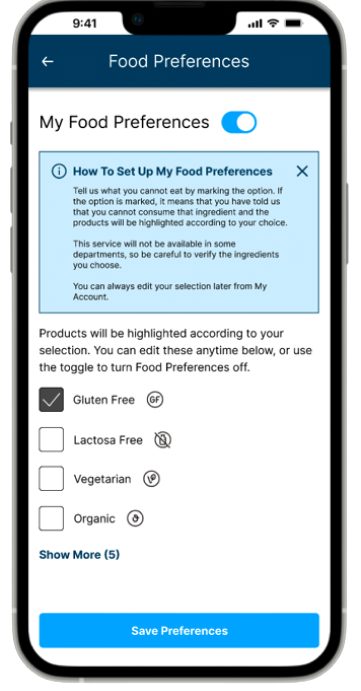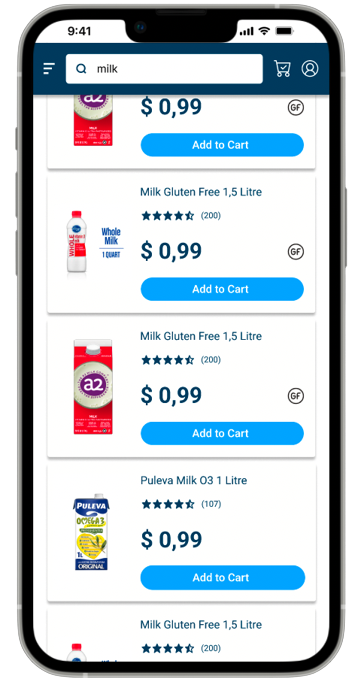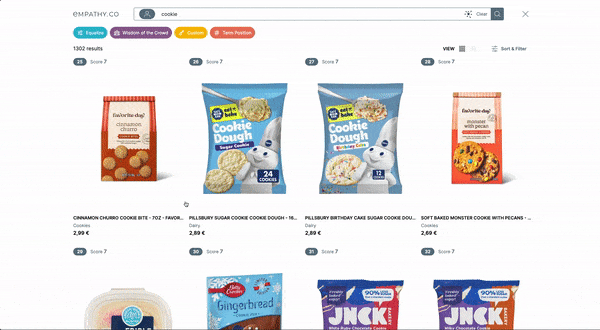Customer Preferences: Food Profile
Customer Preferences: Food Profile
Welcome to the second story in our series of experimenting with filters and favourite options from Empathy’s Experiences Lab. Read the first part based on Favourite Filters.
Understanding individuals’ needs
When shopping online, each person has their own preferences, whether it be a dietary need, personal taste, etc., and applying search filters can become time-consuming. For example, in the case of a gluten allergy, it can be a burden for the customer to manually apply filters each time they make a new purchase related to their diet. This is a monotonous and unsatisfactory online shopping experience.
This led us to explore search customisation that can adapt to specific customer preferences. Product results can be adapted to the consumer’s preferences while always respecting their privacy and the use of personal data.
A faster, more efficient customer search
Our goal is to make the process easier for customers to find what they are looking for, especially through filters or search preferences.
If a customer sets specific preferences, the shopping relationship and experience could be more positive with a successful search.
When customers complete their food preference profile, products that meet the criteria automatically gain more visibility by being tagged with specific product badges and raised in the search results list.
Designing a new way of navigating
Here is what we based the Food Profile Preferences design concept on:
- Customers specify their preferences through a checkbox next to each option to enable the Food Preferences function.

- Once the customer saves their preferences, the search results page must boost and reorder matching products for greater visibility.

- Each product card will have an icon representing the dietary chosen options; in this case: Gluten Free.

Dietary preferences will make for more accessible purchase decisions. Customers will feel free to check or uncheck preference options at any time. In case they search for a product that doesn’t match their preferences, these items won’t be tagged and the shopper will be notified before adding them to the cart.
Benefits for the shopper behind the screen
This improvement gives us a more seamless, customisable, safer and reliable shopping experience that anticipates each customer’s unique shopping preferences.
Consider the potential of a personalised experience, where a trusting relationship is built with the customer, respecting privacy and giving them control over their online purchases.









